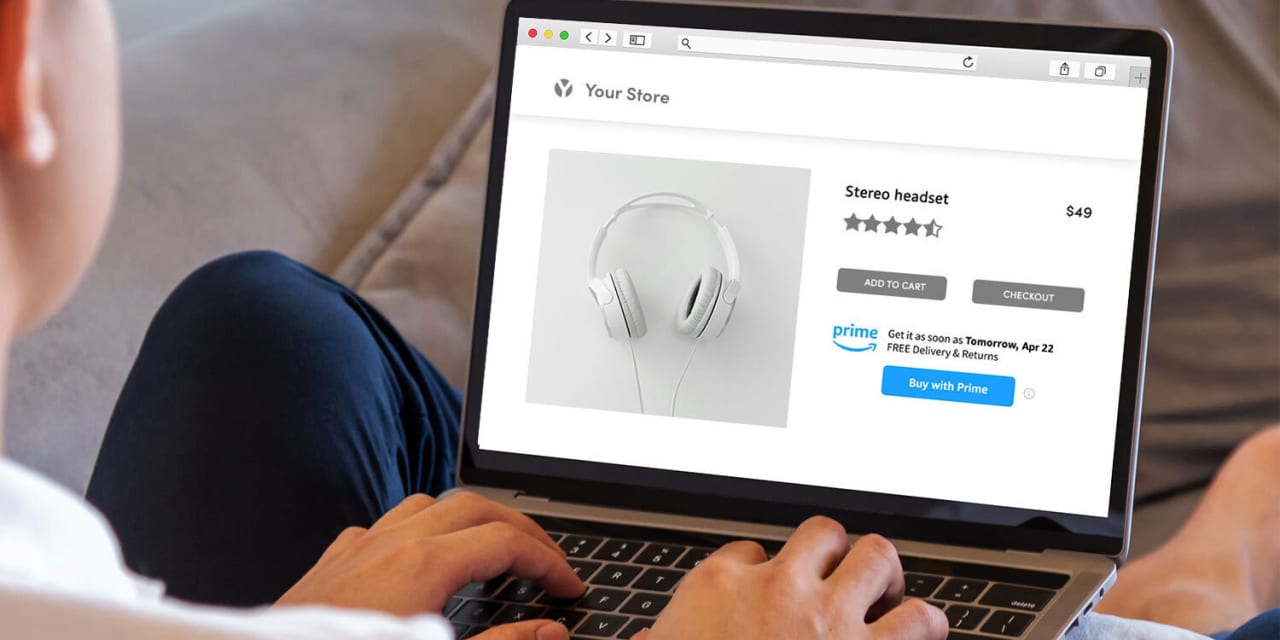Amazon has spent the last two decades revolutionising how we shop online. Yet, its latest initiative, ‘Buy with Prime’, could mark the most significant shift yet. By extending the reach of Prime benefits beyond Amazon’s own platform, the company is positioning itself to dominate not just marketplace sales, but the broader world of online retail. For traditional e-commerce businesses, this move is both a threat and a wake-up call. Understanding why ‘Buy with Prime’ matters — and how it could reshape e-commerce — is crucial for brands looking to survive and thrive in this new landscape.
What is ‘Buy with Prime’?
‘Buy with Prime’ allows online merchants to offer Amazon Prime benefits — including fast, free delivery and easy returns — directly on their websites. When customers visit a participating retailer’s site, they will see the familiar Prime logo next to eligible products. At checkout, they can use their Amazon account details to complete the purchase quickly and securely.
Launched in the United States and now expanding to the UK, ‘Buy with Prime’ effectively blurs the line between Amazon’s ecosystem and the wider web. Shoppers no longer need to be on Amazon.com to enjoy Prime perks. This small but powerful change gives Amazon a presence in every corner of e-commerce without requiring shoppers to leave their favourite independent sites.
The Power of Prime Loyalty
One of Amazon’s greatest strengths has always been its Prime membership base. Globally, there are over 200 million Prime members, with millions more joining each year. These customers are loyal, spend more than non-Prime users, and are heavily influenced by the promise of fast, reliable delivery.
By allowing third-party merchants to tap into this loyalty through ‘Buy with Prime’, Amazon is giving small and medium-sized brands a huge advantage. They can now boost their conversion rates, lower cart abandonment, and offer a trusted checkout experience without needing to invest millions in logistics or payment security.
For traditional e-commerce players that do not participate, the risk is clear: customers might start favouring stores offering Prime benefits over those that cannot, leading to a gradual but serious erosion of market share.
The Fulfilment Advantage
Behind the scenes, ‘Buy with Prime’ is powered by Fulfilment by Amazon (FBA). Merchants participating in the programme must store their inventory within Amazon’s fulfilment network. Orders are picked, packed, and shipped by Amazon, ensuring the same speed and reliability that Prime customers expect.
This gives Amazon even greater control over the e-commerce experience — not just on its own platform but across thousands of independent retail websites. In effect, Amazon becomes the silent force behind a growing share of online purchases, managing logistics without carrying the risks of owning inventory or driving direct sales itself.
For traditional retailers who operate their own warehouses and supply chains, competing with Amazon’s fulfilment speed and efficiency will be an uphill battle.
Data, Influence, and Ecosystem Growth
Another critical aspect of ‘Buy with Prime’ is the data it generates. When customers check out using their Amazon accounts on third-party sites, Amazon gains valuable insights into shopping behaviour outside its platform. This allows Amazon to understand better emerging trends, popular products, and potential market gaps.
Such insights could feed back into Amazon’s broader business strategy, strengthening its marketplace recommendations, private label development, and advertising targeting capabilities. Brands that work with a Global Amazon Agency will need to rethink their ad strategies too, as Amazon’s ability to track customer journeys beyond its marketplace grows.
This expanding ecosystem makes Amazon even more indispensable to brands — not just as a selling platform, but as a fulfilment provider, advertising partner, and customer experience engine.
The Challenge for Traditional E-Commerce
Traditional e-commerce businesses that rely heavily on self-managed fulfilment, independent payment gateways, and slower delivery speeds could find themselves increasingly isolated. Customers, once patient with 5–7-day shipping windows or clunky checkout processes, will expect the same seamless experience they get with Prime — everywhere.
Some larger retailers, especially those with strong direct-to-consumer brands, may resist adopting ‘Buy with Prime’ to maintain independence from Amazon. However, they will need to heavily invest in logistics, customer service, and user experience to match what Amazon-backed sellers can offer almost effortlessly.
What Small and Medium Businesses Should Consider
‘Buy with Prime’ presents a powerful growth opportunity for small and medium-sized businesses. It can level the playing field by offering world-class fulfilment and trust signals at a relatively accessible cost. However, businesses must also weigh the risks of becoming overly dependent on Amazon’s infrastructure.
Ownership of customer data, branding control, and long-term strategic independence are important considerations. Brands that embrace ‘Buy with Prime’ should simultaneously invest in building their own direct relationships with customers, through loyalty programmes, email marketing, and exceptional service.
Careful strategic planning will be essential. While ‘Buy with Prime’ can turbocharge sales in the short term, businesses must ensure that Amazon does not ultimately own their entire customer relationship.

